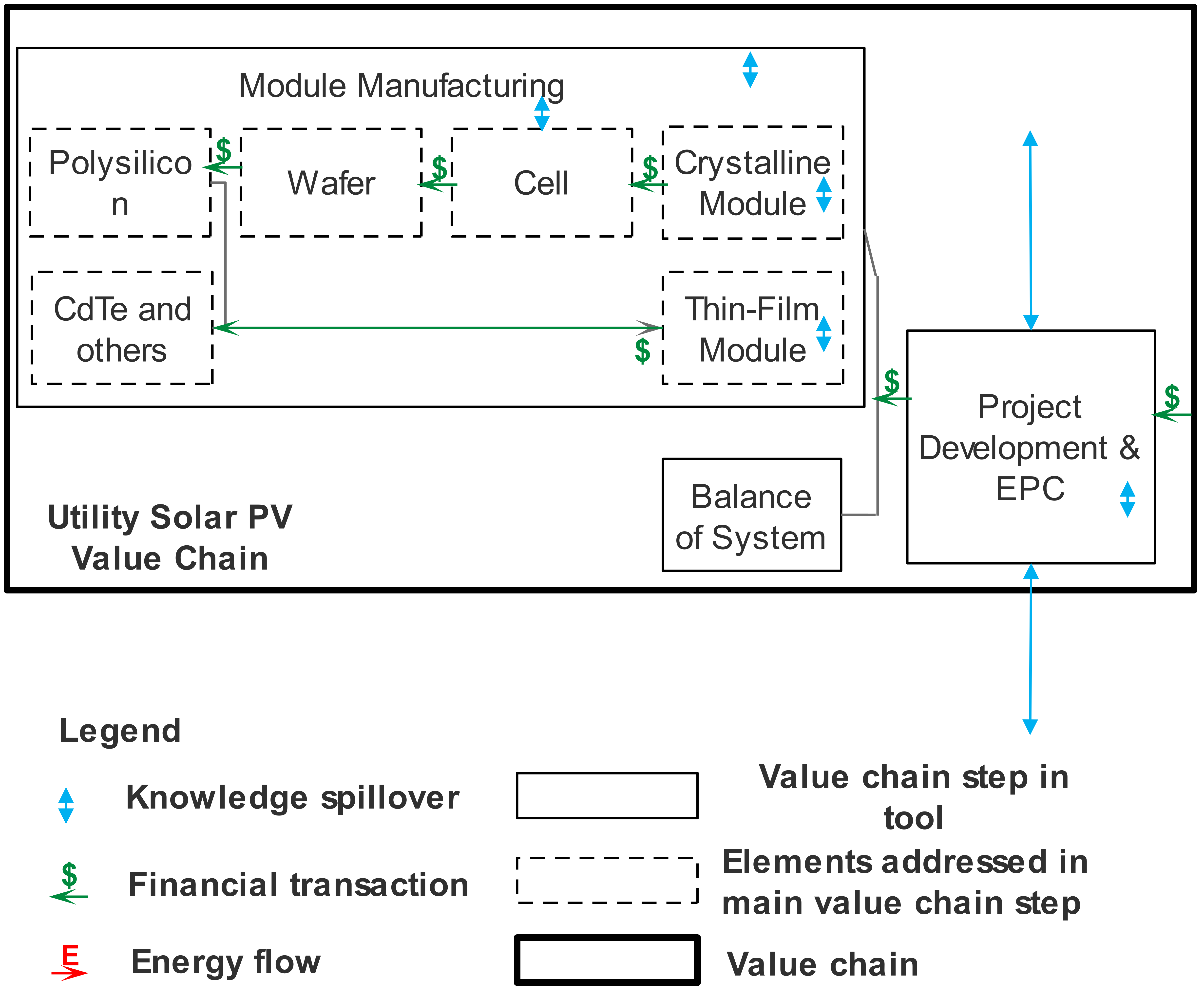As of 2017, utility-scale PV produced 6.3% of U.S. electricity generation, and this sector continues to grow rapidly.[footnote ref=”eia_generation_landing_page”] Building and operating a utility-scale solar power project is a complex process involving manufacturing, site identification and preparation, permitting, construction, and numerous other sub-tasks.
In this value chain, we focus on utility-scale solar power generated using photovoltaic (PV) technology. Photovoltaic materials convert solar radiation to electric energy when photons (particles of light) knock electrons free from atoms, generating a flow of electricity; this process is known as the photovoltaic effect. We divide the utility-scale solar value chain into three steps: 1) Module Manufacturing, which details the processes of manufacturing crystalline silicon and thin film PV modules and their intermediate components, 2) Balance of System, which describes the processes of manufacturing other key components of a PV system, particularly inverters and racking, and 3) Project Development and EPC (Engineering, Procurement, and Construction), in which we discuss the processes involved in siting, permitting, financing, and constructing a utility-scale PV facility.
In the figure below, we present the simplified value chain used in Energy I-SPARK, which condenses the solar value chain into a manageable number of components while retaining the detail necessary to investigate key relationships between industry players.

Utility-Scale PV Value Chain
Note: The dashed boxes in the image above represent key sub-steps in PV module manufacturing which are discussed in more detail separately under the PV module manufacturing step.
Use the drop-down menu above to navigate to the value chain step of interest.
Utility-scale solar systems, by definition, are those which generate solar power and feed into the transmission and distribution system (as opposed to residential or commercial solar, which generates solar power for use on-site at a home or business).[footnote ref=”seia_2018″] [footnote ref=”gtm_2013″] [footnote ref=”gtm_2012″] [footnote ref=”nrel_2012a”] There is a large range in size of currently operational utility-scale solar systems, and several thresholds have been established to identify utility solar in datasets and analyses; the Solar Energy Industries Association(SEIA) and the U.S. Energy Information Administration (EIA) use a 1 MW threshold, while the National Renewable Energy Laboratory (NREL) uses as 5 MW threshold.